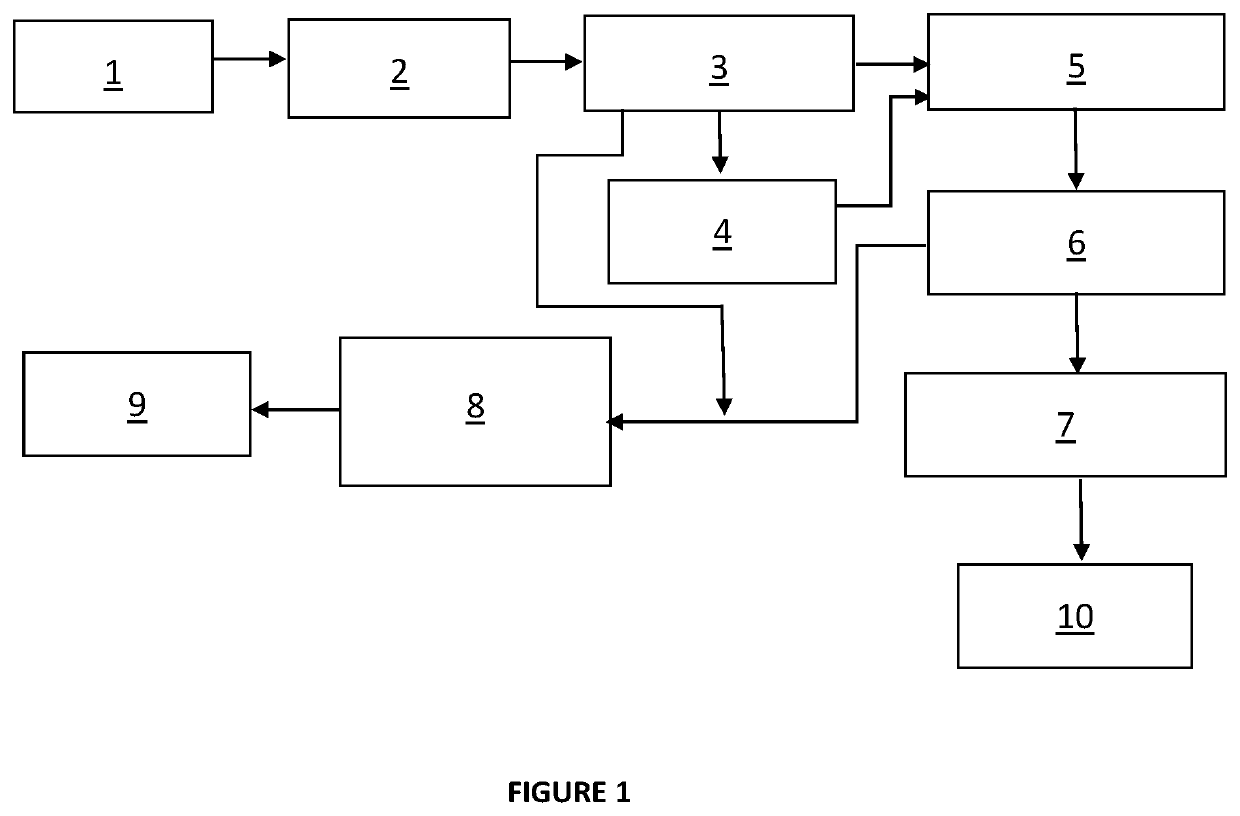Process For Extracting Values from Lithium Slag
a lithium slag and value technology, applied in the field of extracting values, can solve the problems of large heating costs in addition to mining and attrition costs, large quantities of caustic “red mud” produced, and the effect of reducing the amount of slag is not easy to achieve, and reducing the amount of slag produced
- Summary
- Abstract
- Description
- Claims
- Application Information
AI Technical Summary
Benefits of technology
Problems solved by technology
Method used
Image
Examples
Embodiment Construction
[0020]The process for extracting values from lithium slag may be more fully understood from the following description of preferred but non-limiting embodiments made with reference to the FIGURE showing a flow diagram for the process.
[0021]Lithium slag, in the form of spodumene ore residue for example, is obtained as a waste by-product from lithium refining, for example following the spodumene leaching step which liberates substantially all lithium from the ore. The spodumene leaching step may involve sulphuric acid leaching. The lithium slag (which could for example include 68% SiO2 and 26% Al2O3) is first beneficiated as follows in step 1. The particle size of the lithium is adjusted through methods such as milling and / or other classification techniques to an average particle size being less than 100 microns, desirably less than 50 microns. Magnetic particles are removed through any magnetic separation technique.
[0022]The lithium slag particles of particle size less than 50 microns...
PUM
| Property | Measurement | Unit |
|---|---|---|
| temperature | aaaaa | aaaaa |
| temperature | aaaaa | aaaaa |
| temperatures | aaaaa | aaaaa |
Abstract
Description
Claims
Application Information
 Login to View More
Login to View More - R&D
- Intellectual Property
- Life Sciences
- Materials
- Tech Scout
- Unparalleled Data Quality
- Higher Quality Content
- 60% Fewer Hallucinations
Browse by: Latest US Patents, China's latest patents, Technical Efficacy Thesaurus, Application Domain, Technology Topic, Popular Technical Reports.
© 2025 PatSnap. All rights reserved.Legal|Privacy policy|Modern Slavery Act Transparency Statement|Sitemap|About US| Contact US: help@patsnap.com

